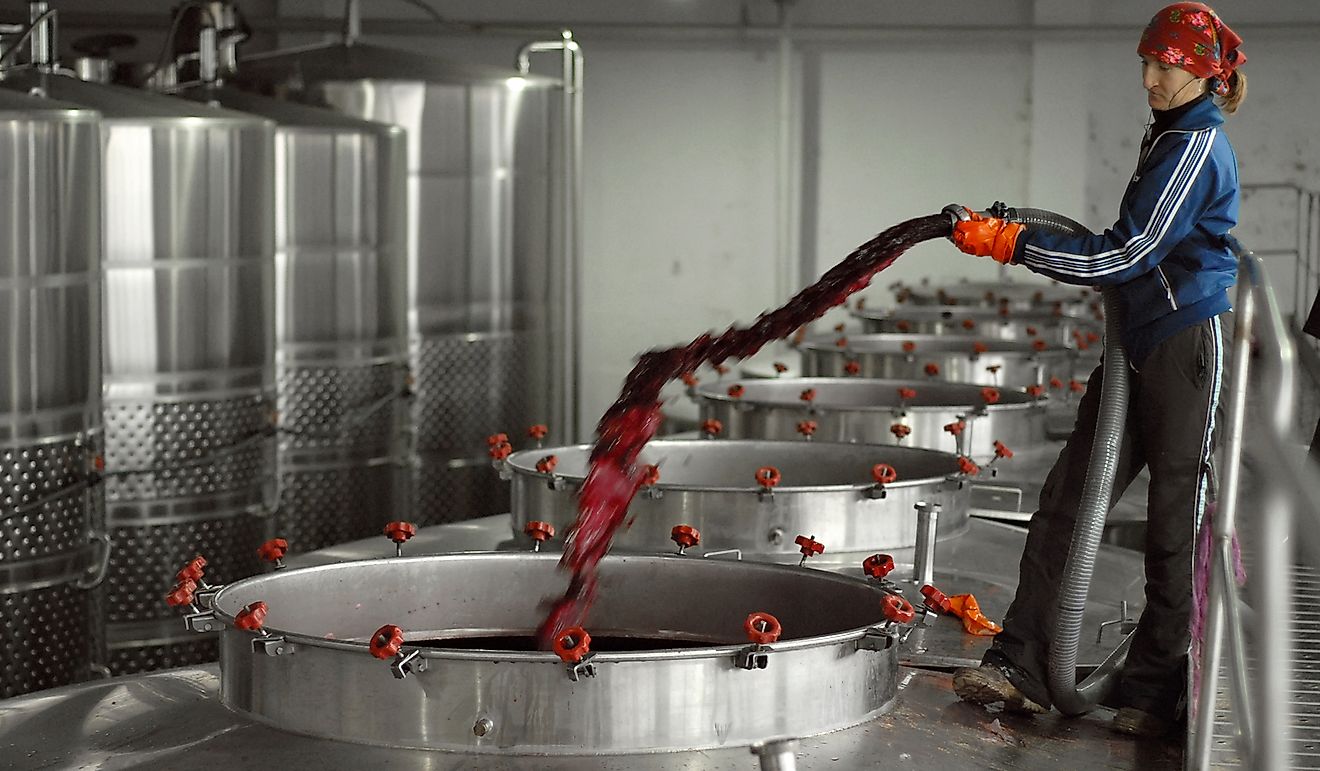What Are The Biggest Industries In Moldova?

Formally known as the Republic of Moldova, Moldova is a nation that is situated in Eastern Europe. The landlocked nation is bordered by two countries namely Romania and Ukraine. Politically, there is the larger nation of Moldova as well as a smaller region known as Transnistria that is sometimes considered part of the country. However, Transnistria considers itself a nation complete with its own government although it is unrecognized. Together with Transnistria, Moldova has an area of about 13,068 square miles. Excluding the breakaway territory, then Moldova has an area of around 11,461 square miles. As per the 2017 census, the country had a population of about 3.4 million people including that of Transnistria. The capital city, which is also the largest, is Chișinău.
From an economic perspective, Moldova is one of the poorest countries in Europe. According to 2019 estimates, the once Soviet nation has a nominal gross domestic product (GDP) of around $12 billion. Adjusted according to the purchasing power parity, then the GDP is around $30 billion. Most of the problems with the Moldovan economy can be traced back to 1992 when the country decided to adopt a market economy, which liberalized prices but drove up inflation. This period was also a transition period from Soviet rule. In between all these changes, rampant corruption has also been a major detriment to economic growth. Despite the problems it faces today, the country is actually on a rehabilitation path with data showing steady growth, albeit a slow one. The main industries driving this economy include agricultural machinery, food processing, textiles, sugar, washing machines, and others. On a larger scale, the industry sector is the second largest sector in Moldova with a share of about 20.3%. The other two major sectors are agriculture (17.7%) and the services sector (62%).
Food Processing
Food processing in Moldova is primarily centered on vegetable oil and sugar although there are also other products. The food processing industry is the largest despite having experienced a steady decline since independence from the Soviet Union, which was back in 1991. Presently, estimates place the contribution of the sector at around 15% of the nation’s GDP. This contribution is a stark contrast to the 58.2% contribution back in 1997. The factors that have contributed to this decline include high prices of energy, the disappearance of markets, drought, reduction in the levels of agriculture, and other factors. In particular, the Transnistria-Moldova issue has been most devastating since Transnistria produces several crucial products that run Moldova’s economy. Some of these include about 95% of cotton fabrics, power transformers, almost 90% of the electricity, a considerable part of cement production, and other key products.
To stem the decline, the country has been trying to come up with ways of acquiring newer markets such as those of the European Union. However, this has proven a trying task since the nation does not produce high-quality goods. One of the most crucial products in this industry is wine production, which accounts for almost 50% of the nation’s export value. The nation has a massive vineyard that spans an area of about 360,000 acres. Of this area, around 253,000 acres is used for commercial wine production and export. There are four distinct wine-producing areas in the country namely Balti, Purcari, Cahul (the most important zone), and Codru. In 2018 alone, Moldova managed to produce wine measuring about two million hectoliters. In Europe, this production places Moldova in the 11th position. Most of the wine is exported to countries like the United States, Russia, Poland, and Romania. The country has a wine cellar known as "Mileștii Mici," which is the largest collection in the world with a capacity of close to two million wine bottles. As documented in the Guinness Book of Records, the cellar stretches for about 155 miles and has tunnels that have a length of up to 75 miles. Aside from wine, tobacco processing is also a crucial industry.
Other Industries
Aside from the food industry, the country also has other sectors driving the economy although they are not as big as food processing. An example of such a sector is the ICT sector, which is relatively young although all forecasts point towards an improvement of ICT in the future. The manufacturing industry is also important although it was adversely affected when the country’s economy entered a recession in 2009. The recession was mostly caused by general adverse conditions in Europe. However, the sector had a slight improvement in 2012 when it accounted for about 13.9% of Moldova’s GDP.











